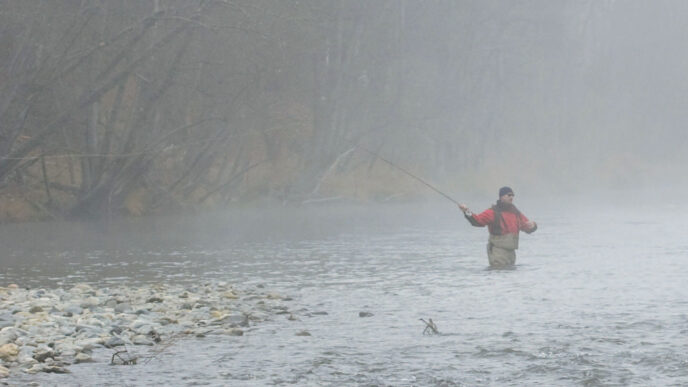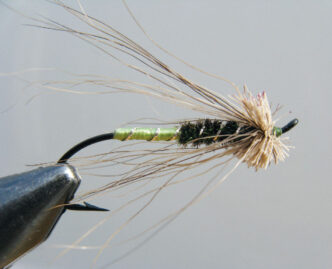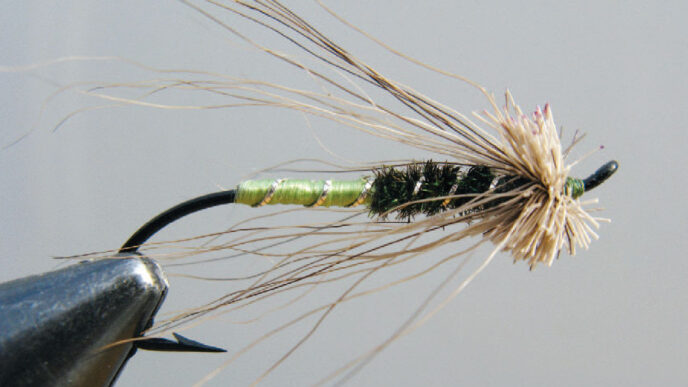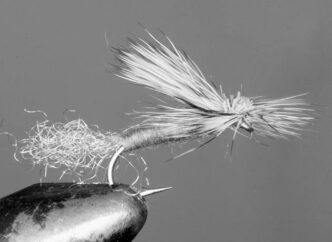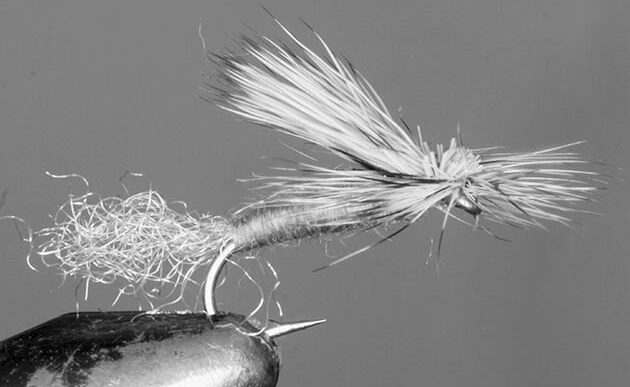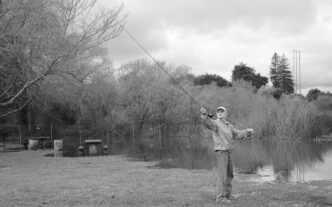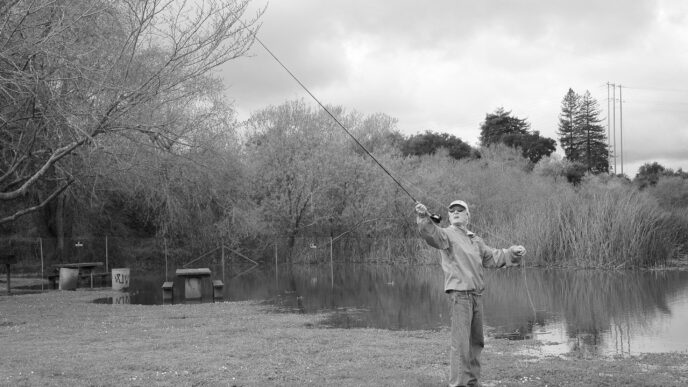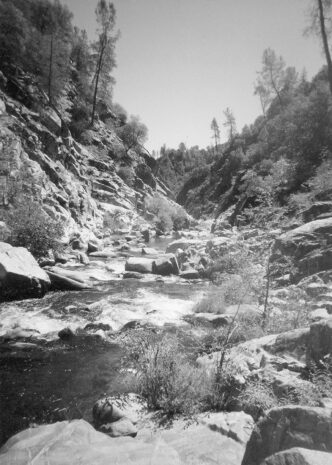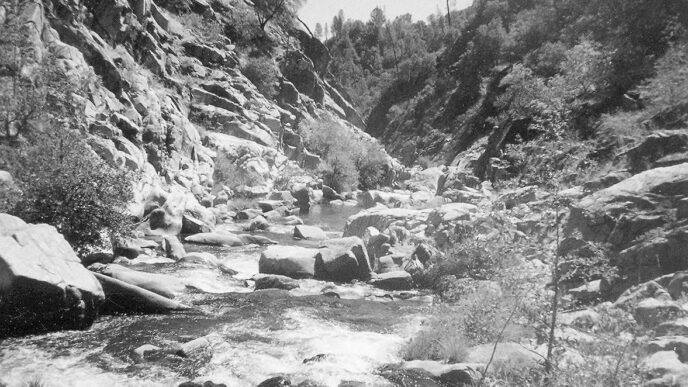I suggested in the November/December “Gearhead” column that for 2011, manufacturers seemed to be working at perfecting or tweaking existing designs, rather than coming up with radically new ones. I think that holds true for fly lines and fly reels, as well as with the new fly rods I discussed in the prior issue. The world of fly reels has changed significantly a handful of times over the last forty or fifty years: in the 1960s, when anodized aluminum allowed for more maintenance-free saltwater use; in the early 1980s, when computer-controlled mills and lathes made complicated machining relatively routine and less expensive; in the mid-1980s, when Kurt Danielsson rethought the idea of a fly reel and came up with Loop’s groundbreaking large-arbor design; and again in the late 1990s, first when disc drags began to appear on reels intended for species like trout and, next, when offshore manufacturers who knew nothing about fly fishing borrowed ideas and designs from the U.S.A. and Europe to produce sophisticated fly reels at relatively low retail prices.
This year’s change — though it began a couple of years ago — is the proliferation of sealed carbon fiber disc drags. Why? Well, it’s not that we’re all freaking out at the corrosion that’s compromising the guts of our expensive reels, or that cork drags don’t work. You don’t hear a lot of complaints about Tibor’s drag system, which is cork and (save for one new model) unsealed. So are Abel’s. Bauer also uses cork, though in combination with a special polymer. It’s simply that features that promise some kind of improvement, whether critical or not, sell reels. If a drag can be invaded by salt water, or sand, or bonefish dust, why not try to isolate it from such things? And if race cars and jet aircraft have gone to carbon fiber in their braking systems, why not use that material in a fly reel drag? After all, we’re all looking to improve. Not to mention acquire new and better gear. With that in mind, let’s take a look at some of the interesting new reels for 2011.
Nautilus, the company that used to be Old Florida and that still builds high-quality reels in that state, introduced another likely winner for 2011. Nautilus’s FWX model is a very lightweight largearbor reel with a sealed carbon fiber drag, counterweighted spool, and exposed palming rim in three sizes for line weights 3 through 8 in diameters from 3-1/4 inches to 3-3/4 inches. Frames and spools are intricately machined, with that “Whoa, where’s all the metal gone?” look that Galvan first came up with on their Torque models. At just 3.6 to 4.1 ounces, FWX models are billed as the lightest reels of their type on the market, and at $240 to $280 are some of the least expensive. We can argue the need for a disc drag on a trout reel until the sun goes down, but if that’s what you think you need or want, one of the smaller FWXs may be your reel. The FWX 7/8 — the biggest in the series — is rated for 20 yards of 20-pound-test Dacron and an 8-weight weight-forward floater, which ought to make it a contender in the steelhead/striper/bonefish/redfish/largemouth/snook market.
Another modestly priced new large arbor reel line for 2011 that offers models in multiple useful sizes is Sage’s 4200 series. Sage rightly gets a lot of attention and praise for its fly rods, but the company’s six different reel series are the result of the same commitment to design and engineering. At $289 to $319, the new 4200s sit in the middle of the price range for Sage reels. They’re machined from aircraft-grade aluminum, anodized for saltwater use in either platinum, bronze, or black, and feature a sealed carbon fiber drag system and interchangeable spools. Classy.
Orvis renamed and substantially upgraded their Battenkill mid-arbor and large-Arbor reels for 2011. Now called Access and Hydros, respectively, both models are cosmetically similar to their predecessors, but are lighter, with more porting, have sealed carbon-to-stainless drag systems, more roller bearings, and longer, easier-to-use handles with sturdier stainless steel spindles instead of aluminum ones. The five Access mid-arbor reels come in sizes suitable for line weights 1 to 12 and are very moderately priced at just $129 to $169. The six slightly larger-diameter Hydros large-arbor models are sized for line weights 3 to 12 and are priced from $198 to $259. Both models are anodized for use in salt water. They’re improved, competitive, and worth a look.
Redington also has two new reel series for 2011. Redington’s large-arbor Delta reels are fully machined from 6061T6 bar-stock aluminum, anodized in a classy smoke-gray color, and have corkTeflon disc drags systems controlled by a large and easy-to-use drag knob on the frame side. Deltas feature a one-way clutch bearing for immediate drag engagement, easy-to-change spools, saltwaterproof anodizing, and come in four sizes, from 5/6 to 11/12, which are priced from $199.95 to $259.95. Redington’s new low-priced Pursuit large-arbor models, at just $59.95, join a long line of well-made entry-level Redington products. With disc drags and easy-to-change spools, they’re offered in 4/5/6 and 7/8/9 models.
Another new entry-level model for 2011 is Echo’s Solo. Frames and spools on these large-arbor designs are fabricated from impact-resistant nylon. They’re offered in 4/5 and 6/8 line sizes and have stainless steel inner workings and a strong disc drag. At $34.99, they’re a great choice for a reel you don’t mind falling on in the backcountry or for a kid’s starter outfit.
Ross’s new reels for 2011 are the F1 models. Like other contemporary reels, the F1 spools and frames are highly machined, have a (gasp!) sealed drag system in which carbon fiber is interfaced with stainless steel, and incorporate sealed ball bearings for smooth rotation. They’re available in four sizes for line weights 2 through 9 and in black, nickel, or a lowglare “guide” finish. F1 prices run from $425 to $525.
Bauer has discontinued their workhorse Mackenzie SuperLite for 2011 and replaced it with the new and upgraded Mackenzie CFX. The CFX adds sealed stainless steel ball bearings with three times the load capacity of the old SuperLite, has a V-arbor spool that retains the detented star drag, and has the same sealed, maintenance-free carbon fiber disc drag as the company’s Rogue models. CFXs have a unidirectional outgoing click, easy-to-change spools, and come in six sizes, from the tiny 3-inch CFX .5 for 1-weight to 3-weight lines to the 4-inch diameter CFX 5 for 9-weights. They run $300 to $415.
You don’t need to spend buckets of dough on a steelhead reel, but if you’re hopelessly serious about them or are a traditionalist or an aesthete, you’ll probably end up emptying your wallet and not looking back. The fly-fishing industry has always graciously obliged this affliction, and 2011 offers you a couple of pricey, but arguably worthwhile options.
Hardy, to the delight of traditionalists, has reintroduced the Taupo variation of the Perfect. The Taupo is a 3-7/8-inchdiameter spool Perfect introduced in the late 1950s that, as the name suggests, was developed with huge New Zealand rainbows in mind. Up here in the Northern Hemisphere, western branch, it gained a small, but loyal following among steelhead anglers who wanted a Perfect that could hold more backing than the standard 35/8-inch and 3-7/8-inch models and yet weigh less than the big salmon Perfects. The Taupo did just that and in its original form was in production for just four years, making it highly collectible today. The new version, like the other recently reintroduced Perfects that Hardy is making in the U.K., is probably a better-made reel than its ancestor. Machined from bar stock aluminum, then hard anodized, it’s structurally stronger and more durable than the old cast aluminum models. It also features a click drag mechanism that can be changed to left-hand wind. At $695, it’s also less expensive than the other recently reissued Perfects, perhaps because the hard anodizing doesn’t require an agate line guard. If you can bear to fish something that didn’t come out of Hardy’s Dickensian shop, the new Taupo will add both class and function to your light Spey or switch rod.
Ted Juracsik’s latest design, celebrating the company’s thirty-fifth anniversary in the business, is the Tibor Signature Series. Signature reels are gorgeous large-arbor reels, made in the U.S.A. They feature easily changed spools and a sealed microcork drag that Tibor claims is the strongest in the industry. Available in a handful of colors for line weights 7 through 9 and 8 through 10, with a personalized name plate and a lifetime warranty, they’ll set you back just under $800. They’re not the most expensive reels in the Tibor lineup, but perhaps the most interesting.
For Spey fishers who favor modern design over tradition and have the requisite cash to splurge or who regularly fish big British Columbia rivers where the steelhead have the size and inclination to run off a football field’s length of line, Mako Fly Reels has added a 5-inch-diameter Large Spey model to its lineup. Like other Makos, it features an intricately machined aluminum body and spool that provide structural strength without depending on lots of weaker fasteners, such as screws. The drag is a totally sealed multiple carbon system that is impervious to sand, grit, salt water, or the entreaties of the fish it’s stopping. Like other Makos, the Large Spey is offered in gold, platinum, or black or in any combination of the three. Gold and platinum reels are Type II anodized, which until lately has been the hardest and most durable surface finish available on fly reels. Black Mako reels are Type III anodized, which provides an even deeper and harder finish. There’s also a black Stealth finish where Type III anodized components are surgically vapor blasted with fine glass beads to create a uniform nonglare finish. None of this comes cheap, with the black Stealth model running a cool $1,390, while all other colors cost $200 less. Some of you folks reading this already know that you’re going to have one, no matter what the cost.

For trout anglers who are strongly tradition-oriented, Cortland has a winner it their silky smooth and very appealing new Retro models. These are black-anodized click drag reels with an exposed palming rim on the spool and a knob to regulate tension on the frame. The spool and the bottom half of the frame been artfully drilled out on both sides for lightness. Retros are available in 2 7/8 and 3 1/8” sizes, at a hair over 3 ounces each, perfect for trout lines. While not quite as handsome as an old CFO, or a Hardy Marquis/SA System or Hardy Lightweight, Retros are still classy, spartan, functional, little lookers that, in an intelligent world, should be jumping off dealers’ shelves onto light trout rods. And did I mention they were only $129.95?
Last, but not least, for traditionalists whose purchasing habits are governed by a more finely tuned aesthetic sense than mine, Willow Classic Reels offers an extensive line of eye-catching light trout reels for 3-weight to 5-weight lines. Willow Classics are built in a handful of, you guessed it, “classic” styles — some with raised pillars, some with S handles . . . you get the idea. They can be ordered in a handful of metal finishes and with inlaid side plates of materials such as maple or redwood burl, ebony or, what surely would no doubt have been Liberace’s favorite, “white parchment with flowers.” Let your imagination, or your fantasies, run wild. Just $500 to $700 will do the trick.
New Lines
If you thought there were a huge number of options available when choosing a fly reel, you’ll end up with a splitting headache trying to get a handle on the number of choices available in the fly-line market. A recent survey of my catalogs and the Internet showed Rio, Cortland, and Scientific Anglers each listing more than 50 families of fly lines. Airflo lists over 25, and even little Monic lists 15. Note, by the way, that I’m not even taking into account line families that include both double tapers and weight forwards. If you add to this list the house lines branded by outfits such as Orvis or Cabela’s, the total grows even higher. The mind fairly reels, and I don’t apologize for the pun. I’m also sure that somewhere out there is a line specially tailored for fishing emerger patterns for female cutthroat trout between 11 and 19 inches long on moonless Thursday evenings in July. That noted, there’s no way I’m going to cover all the new specialty lines without putting both of us to sleep. On the other hand, there are some interesting flyline developments worth mentioning.
Rio’s new Avid series of lines is a response to the company’s desire to offer a high-quality midpriced fly line that shares some of the significant features of their top-end Gold and Trout LT lines. Avids have Rio’s Agent X high-float coating, but with a welded loop only on the front end, and not on the back as well, like the Rio Gold and Trout LT lines. They also lack the dual-tone coloring that gives casters a visual pickup point and the more expensive lines’ spiffier Extreme Slickness and Super Floatation technologies. Avid is priced at $54.95, as opposed to the Rio Gold’s and LT’s $69.95.
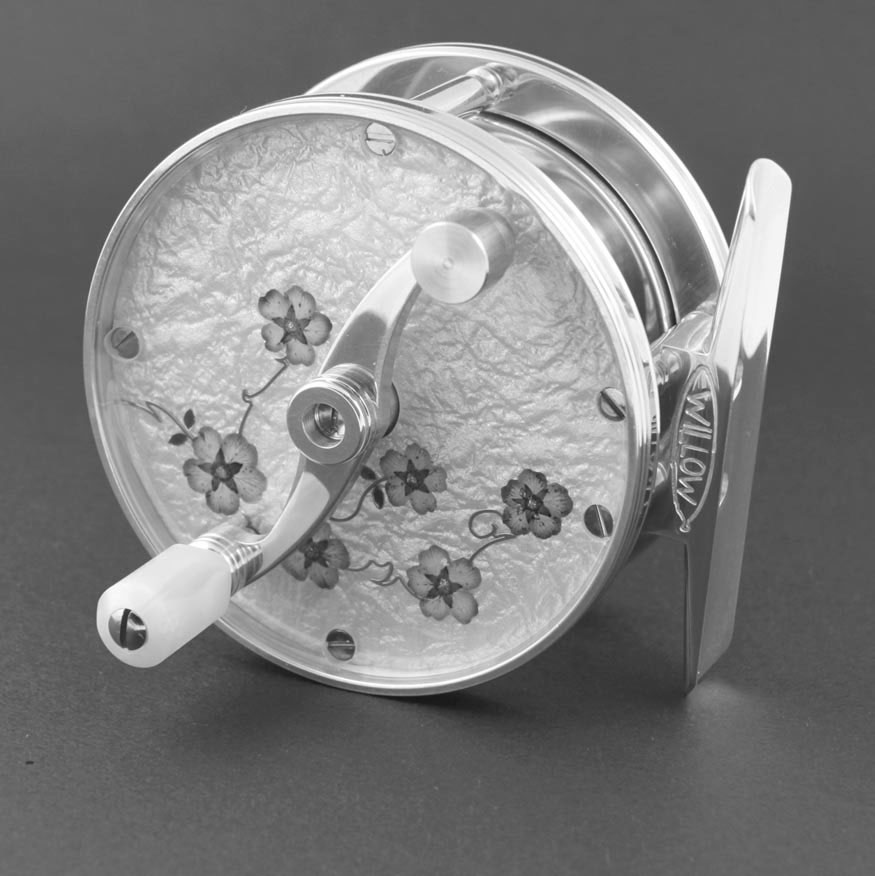
Scientific Anglers Sharkskin lines got lots of well-deserved attention when they were introduced and more when the Sharkskin family expanded past the original floaters. It wasn’t simply because the lines cast and float really well or even because, at $99, they were the most expensive synthetic fly lines in history, but also because some anglers objected to the noise their textured surfaces make when running through the guides. Streamer and stillwater fly fishers, who do a lot of retrieving, objected because Sharkskins could require some sort of armor on your stripping finger to prevent the line from cutting a groove in it. The solution to both these concerns is SA’s new Mastery Textured family of lines. With a dimpled finish that Scientific Anglers likens to that on golf balls, Mastery Textureds gain some of the same low-friction shooting qualities of Sharkskin without quite the noise or the potential to begin a digitectomy. They also float high, pick up easily, and cast very nicely. At $79.95, they’re $20.00 cheaper than Sharkskin, which should make them more attractive to more folks. They’re available in five different freshwater and saltwater configurations.
Scientific Anglers also introduced its new SA ID system, which prints the weight and type of line directly onto the line itself. The information will, as I understand it, go on the tip of the line, which is great, but I wish they’d do it on the back end, as well, so those of us with lines we’ve taken off reels can tell at a glance what we’ve got. No good deed, you see, goes uncriticized. SA ID will debut on the new Mastery Textured series and come as a running change on SA’s other line families as those lines are made. Cortland did something like this a number of years ago, and I wonder why they dropped it.
Speaking of Cortland, a new Precision Dyna-Tip Platinum LowVis line is that company’s sole new line offering. This is a trout line, manufactured in weight-forward 3-weight to 8-weight floaters, with longer heads, extended rear tapers, and larger-diameter running lines for better control. The coating includes a low-memory jacket that doesn’t wilt in summer heat. The tip and butt both have welded loops, and a foot-long length of tip plus loop is a lowvis dark green, made from a proprietary process/material that Cortland says will land as lightly as a feather and stay virtually unsinkable.
An interesting new player in the flyline game is Northern Sport, a Canadian fly-line manufacturer that’s been around for 30 years, mostly supplying tackle companies with private-label fly lines. As of the 2010 Fly Fishing Retailer Show, the company has been actively seeking fly shop dealers for their Aqua Nova brand of lines. Premium Aqua Nova lines in floating, intermediate, and sinking double-taper and weight-forward versions should retail for prices in the high $20 to low $30s. Mid and Standard Series lines, including floaters and sink tips, will sell for even less. I’ve tried both versions and had no complaints about the way they cast or floated. How they hold up, compared with premium lines, is an open question, but I’d be amazed if there weren’t at least a handful of imaginative fly shops who’ll jump at the opportunity to sell a line that any parent can afford for his kid or for use as a backup.

New Tippet Materials
Tim Rajeff, of Echo Rods and Airflo lines, has added two kinds of Germany’s excellent Stroft tippet material to the Rajeff Sports product lineup. Stroft GTM, an ultralow-diameter, supple monofilament with exceptional knot strength, has been a top choice of picky anglers in Europe for years. If you’re a fanatic, you can get it in diameters as small as 9X (.002 inches), which tests out at just under 1 pound breaking strength. GTM in 6X (.0047 inches), a diameter that I suspect sees the most use by spring-creek anglers, tests at a hefty 4 pounds. For the truly picky, GTM is also available in 8.5X, 5.5X and 4.5X diameters. Stroft’s other mono, called ABR, is a stiffer, more abrasion-resistant line that still retains good suppleness and is available in 5X and larger diameters, with 5X testing 5.28 pounds. Cost for a 27-yard spool of either (25 meters, for those who speak metric), is a very reasonable $4.99. Larger 100-meter spools are also available. TroutHunter, a fine fly shop on the Henry’s Fork in Island Park, Idaho, has dipped its toes into the branded product game with an extensive line of tapered leaders and tippet material. Apart from their being supple, strong, and possessing excellent knot strength, there are some other neat features to these products. To insure that the material behaves as labeled, even after sitting on a dealer’s sundrenched wall rack for extended periods of time, each TroutHunter tippet spool or leader comes in UV-resistant plastic packaging. The tippet material is also protected by a UV-resistant, color-coded band, rather than a conventional scrunchy. The spool price for TroutHunter Nylon, available in 0X to 8X and including 6.5X and 5.5X, is $6.50, while the fluoro is a hefty $22.95. But these are 50-meter spools, almost twice as much material as most others. Nice work, all of that. TroutHunter’s knotless, tapered trout leaders and Rene Harrop 14-foot Signature leaders are also packaged in UV-resistant plastic and cost $4.75 and $5.25, respectively. For what it’s worth, I used the 5.5X (4-pound test) and 6.5X (3.1-pound test) tippets and leaders on a skinny-water brown trout trip in late October and couldn’t have been happier.
That’s it for now. Next time around: new waders, boots, and accessories.









